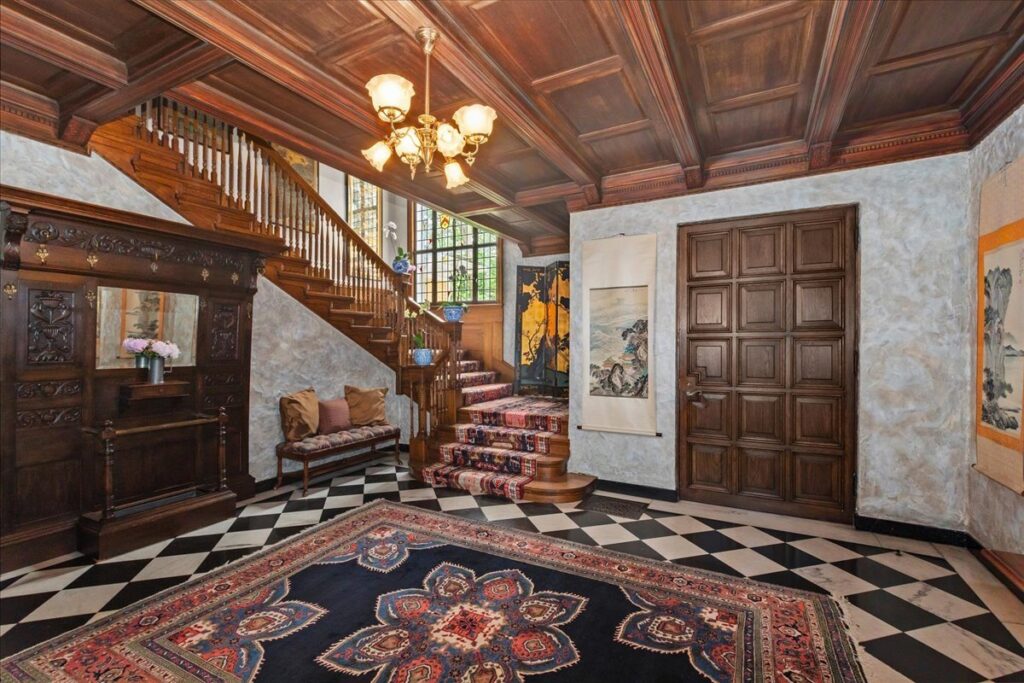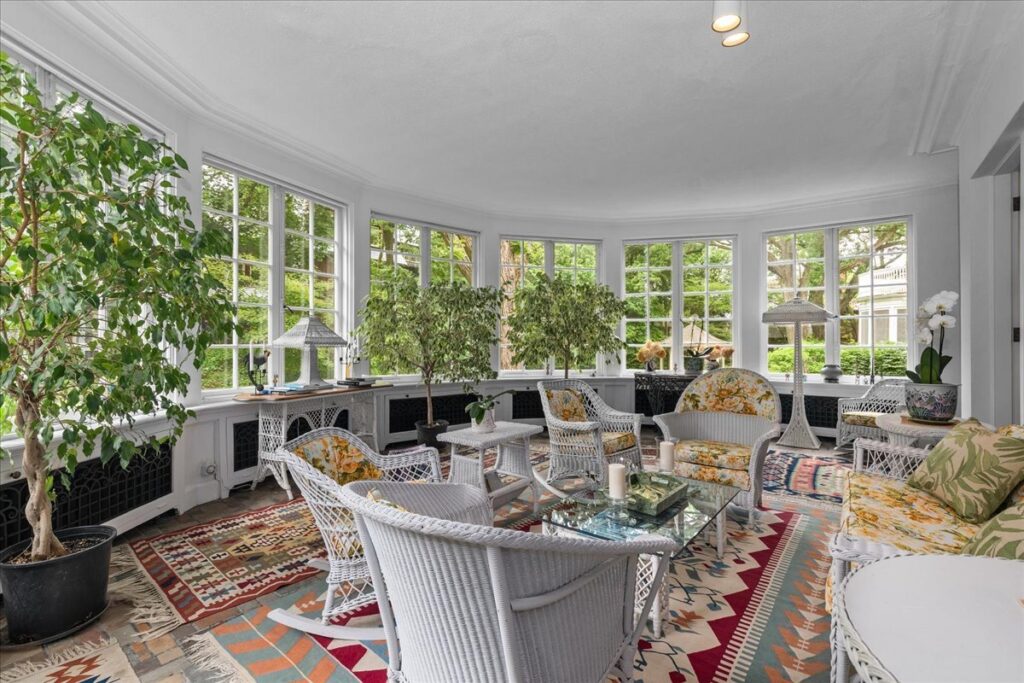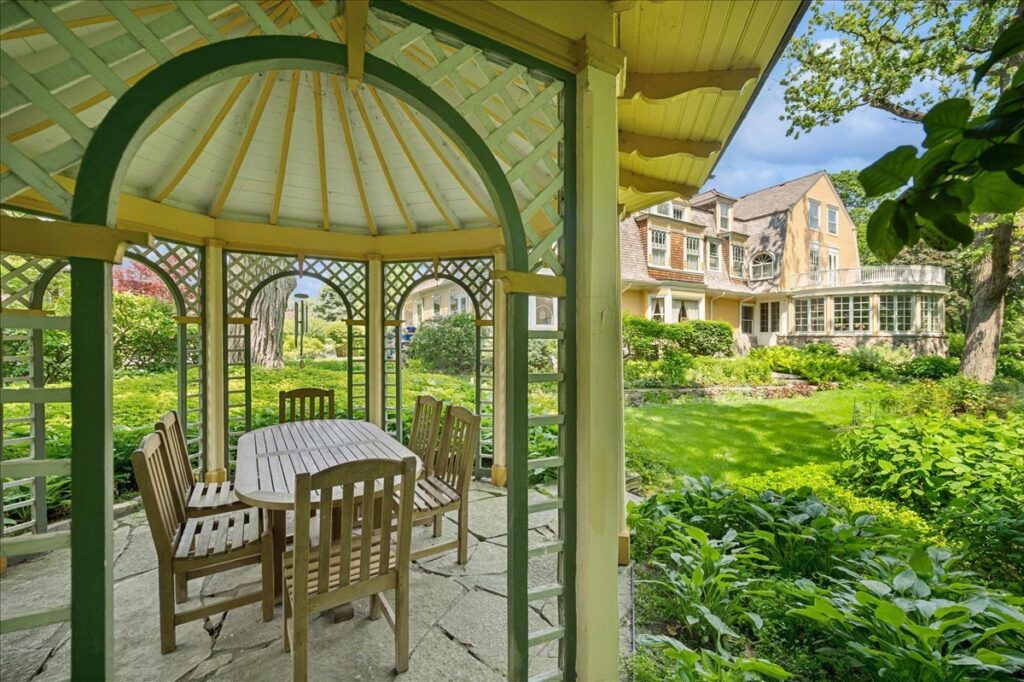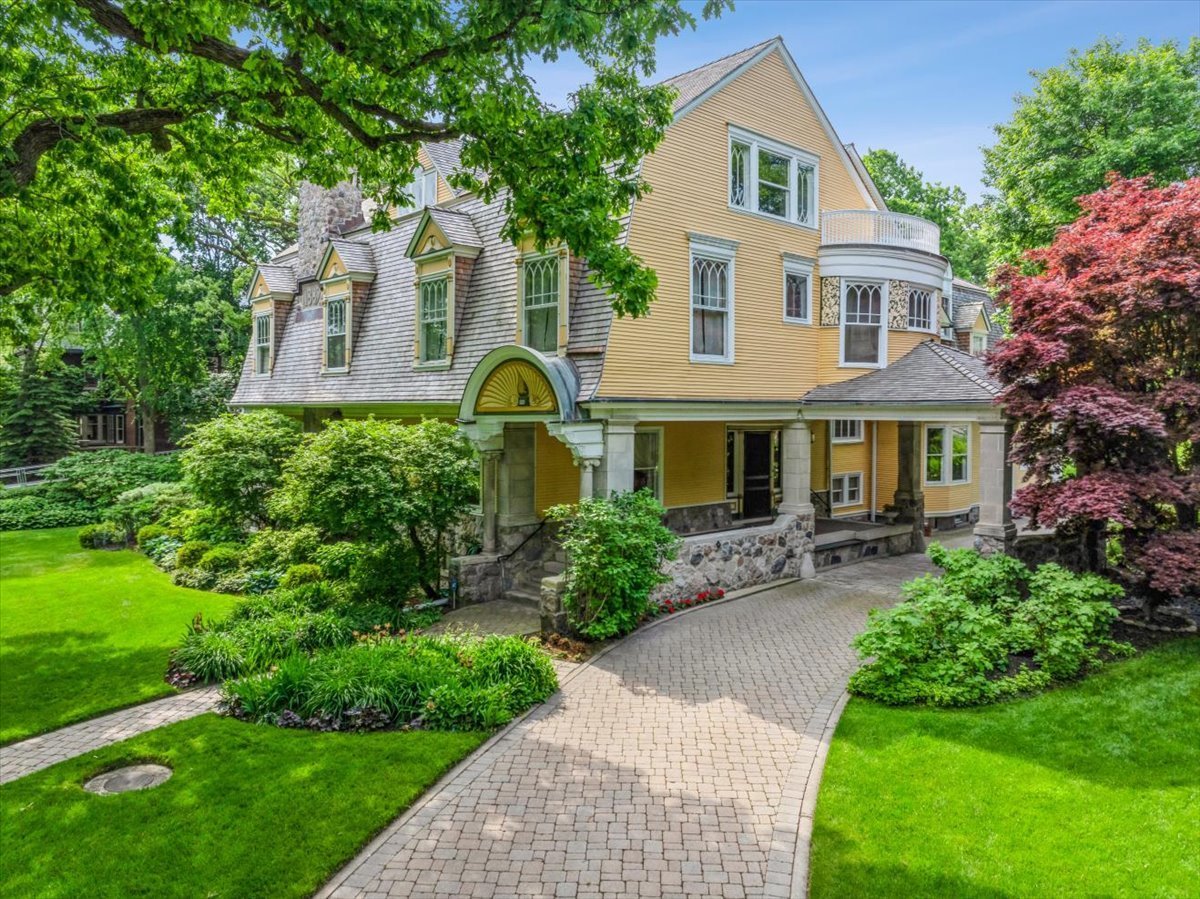A historic home in Evanston designed by Joseph Lyman Silsbee — Frank Lloyd Wright’s first employer and mentor — is on the market for the first time in nearly 30 years. Having last sold in 1996 for $1.2 million, the home at 202 Greenwood Street now has an asking price of $3 million. Located on a 1.25-acre lot adorned with mature trees and perennial gardens, this yellow shingle-style home overlooking Greenwood Beach and Dawes Park features a large gambrel roof accentuated by four pedimented dormer windows, a stone foundation, an asymmetrical chimney, and a red-tiled entry porch.
According to local architect Christopher Payne, who has extensively researched and written about Silsbee on his blog, Silsbee excelled at large-scale projects for affluent families, characterized by “a great attention to detail and an eye for the latest fashion and style” of the late 19th century. Silsbee’s architectural office was a training ground for young talent just starting out in Chicago. A 20-year-old Frank Lloyd Wright, who briefly worked as a draftsman in 1887 alongside George Elmslie, George W. Maher, and others, later referenced this clapboard and gambrel-roofed design in some of his early work, specifically a “bootleg” project for Warren McArthur in Kenwood in 1892. Wright’s own home in Oak Park, which was recently featured in the latest season of The Bear, was also clearly influenced by Silsbee.

The 7,500-square-foot Evanston residence, featuring seven bedrooms and six full bathrooms, was designed in 1889, with construction completed by 1890. It was originally built for Arthur Orr, who amassed considerable wealth as a grain businessman and real estate developer. Silsbee also designed two other large homes on the same street: the William and Idea Hammond House, built in 1891-92, and, at the end of the block, the William and Mary Bartlett house, completed in 1892 and torn down in the 1960s (the coach house still survives on Forest Avenue).
In 1897, seven years after the initial construction, Silsbee was hired by Orr to add a rear extension to the home that harmonized with the original design. Approximately 30 years later, the architectural firm of Mayo & Mayo were commissioned by a subsequent owner to redesign the entire ground floor and build another addition, which included a tiled solarium, and an elevator was added in the 1950s. Although little of Silsbee’s interior work remains, the current owners have restored the grand three-story wooden staircase and reinstalled original sconces and fixtures, and Payne says that Silsbee designed some of the fireplaces on the second floor. Some other notable interior details include carved oak ceilings, leaded glass windows, and an octagon-shaped library with mahogany-paneled walls.

The property also features a coach house that includes a three-bedroom apartment situated above the former horse stable, which has now been converted into a heated four-car garage. This additional structure could serve as an ideal guest suite or potential source of rental income. The grounds are spectacular, offering a sense of privacy as well as views of the lake and features a charming gazebo, rose gardens, and a flagstone granite patio.
Evanston passed a law decades ago that preserves large estates such as this from ever being developed, ensuring that the surrounding open space will remain unchanged. Payne says this home is an excellent example of the residential design for which Silsbee was famous, and — one would hope — its next owners will appreciate and honor its history and architecture.




